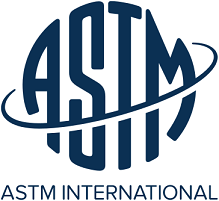
ASTM International is a globally recognized standards organization that develops and publishes consensus technical standards for materials. ASTM was formed in 1898 to address the frequent rail breaks affecting the railroad industry. Originally called the “American Society for Testing Materials” in 1902, it then became the “American Society for Testing and Materials” in 1961 before it changed its name to “ASTM International” in 2001.
There are over 12,000 standards, the most popular ASTM specifications for Eagle Stainless Tube are A269, A213, A249, A908. All of the “A” specifications pertain to iron and steel materials. Although these are the most popular specifications that Eagle supplies, other specifications certainly can be met upon request.
| ASTM 269 | Standard Specification for Seamless and Welded Austenitic Stainless Steel Tubing for General Service |
| ASTM 213 | Standard Specification for Seamless Ferritic and Austenitic Alloy-Steel Boiler, Superheater, and Heat-Exchanger Tubes |
| ASTM 249 | Standard Specification for Welded Austenitic Steel Boiler, Superheater, Heat-Exchanger, and Condenser Tubes |
| ASTM 908 | Standard Specification for Stainless Steel Needle Tubing |
A269
The A269 standard specification covers nominal-wall-thickness, seamless and welded austenitic steel tubing for general corrosion-resisting and low- or high-temperature service. All material shall be furnished in heat-treated condition. The steel shall conform to the chemical composition requirements. Different mechanical test requirements that include, flaring test, flange test, hardness test, and reverse flattening test are presented. Also, each tube shall be subjected to the nondestructive electric test or the hydrostatic test.
A213
The A213 specification covers seamless ferritic and austenitic steel boiler, superheater, and heat-exchanger tubes. The tubes shall be made by the seamless process and shall be either hot-finished or cold-finished, as specified. The austenitic stainless steel tubes shall be furnished in heat-treated condition. Tension test, hardness test, flattening test, and flaring test shall be done to each tube. Also, each tube shall be subjected to the nondestructive electric test or hydrostatic test.
A249
The A249 guide specifies standard specifications for nominal-wall-thickness welded tubes and heavily cold-worked welded tubes made from the austenitic steels with various grades intended for such use as a boiler, superheater, heat exchanger, or condenser tubes. Heat and product analysis shall conform to the requirements as to chemical composition for carbon, manganese, phosphorous, sulfur, silicon, chromium, nickel, molybdenum, nitrogen, copper, and others. All materials shall be furnished in the heat-treated condition following the required solution temperature and quenching method. The material shall conform to the prescribed tensile and hardness properties such as tensile strength, yield strength, elongation, and Rockwell hardness number. The steel shall undergo mechanical tests such as tension test, flattening test, flange test, reverse-bend test, hardness test, and hydrostatic or nondestructive electric test. The grain size of different grades of steel shall be determined in accordance with the test methods.
A908
The A908 specification standard covers austenitic, stainless steel, needle tubing in hard-drawn tempers for industrial application. An electric furnace or another similar primary melting process with or without degassing or refining may be used. Needle tubing shall be made by the seamless or welded and drawn process and shall be furnished in the hard-drawn temper condition. Tension tests shall be made to meet the required tensile requirements.



